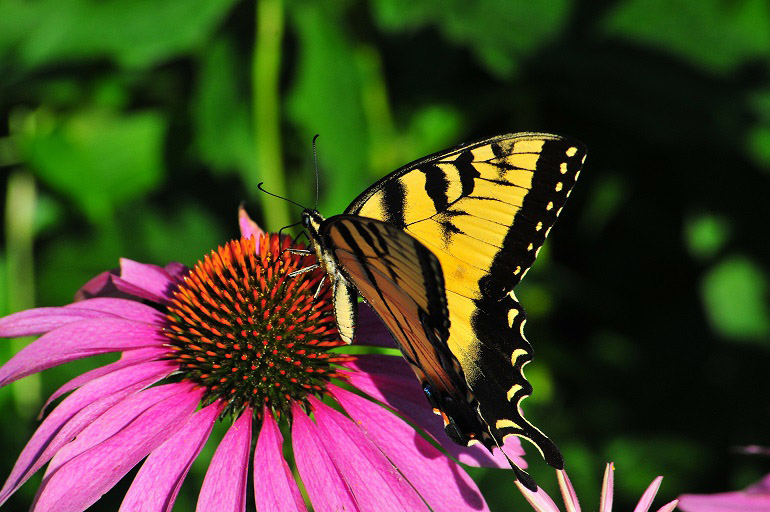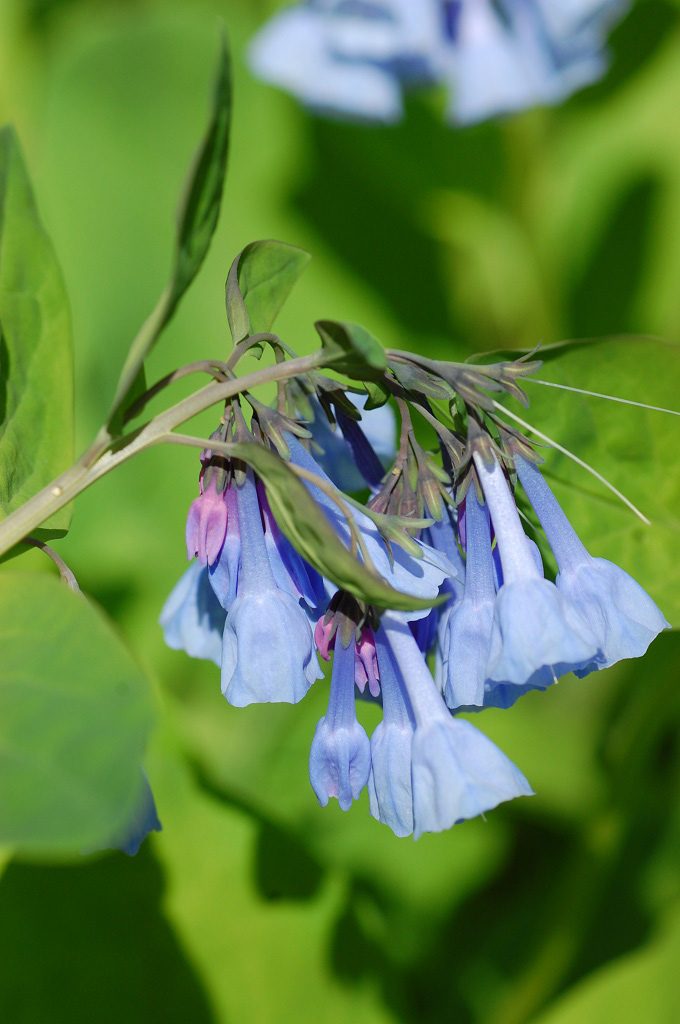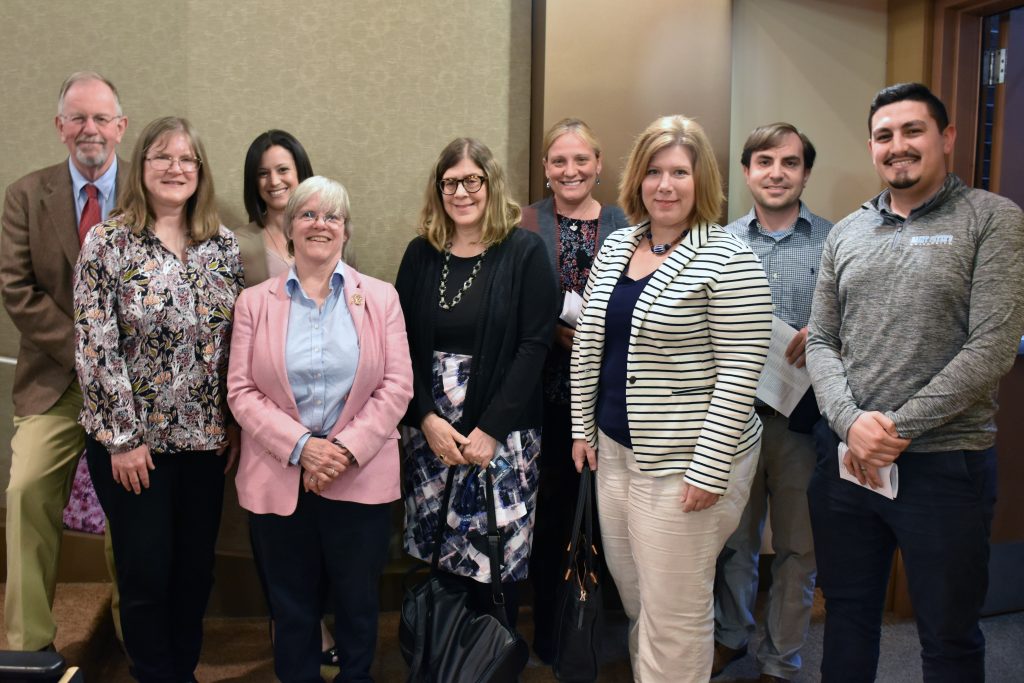
Tiger Swallowtail Butterfly Taken by Carol A. Miller
“If you notice anything, / it leads you to notice / more / and more…” –“The Moths” by Mary Oliver
“Let’s Meet the Neighbors: Nurturing Where We Live,” given at the 67th Annual Mendel Lecture by Frances Raleigh, Ph.D., professor emerita of biology, addressed the importance and significance of supporting local and native bird species in Jersey City.
Through Project FeederWatch, Saint Peter’s University students and Dr. Raleigh surveyed migratory birds that came to feeders on campus. Project FeederWatch is a system developed by Cornell University that surveys birds that come to feeders in the winter; the observations provide information about changes in bird distribution and abundance across North America.
Dr. Raleigh gave an overview of some of the most and least common birds using audio and visual supplements. The three most common birds to visit the feeders were the house sparrow, the mourning dove and the European starling. The house sparrow is comfortable in a human environment and they nest mostly anywhere. They are chirpy and will land on café tables and beg for bread crumbs. The mourning dove lets out a wail that sounds like a mourning song (listen here) and is sometimes mistaken for an owl.
“The European starling is not native to North America, as you can tell by it’s name,” said Dr. Raleigh, “Someone wanted all of the birds mentioned in Shakespeare to live in Central Park, but of course they took off.”
Another common bird is the northern mockingbird, which mocks the songs it hears and has a complicated call. People have been known to have sing-offs with these birds.
“Mocking birds have been one of my favorites for years because they sing. They are mimics so they keep changing the song they are singing,” said Dr. Raleigh.
Sightings of the following birds were rare, including the downy woodpecker, which is the smallest woodpecker in North America. He pecks at trees to find food under the bark. He has two toes forward and two toes back to help prop himself on trees. Yellow-bellied sapsuckers, red-bellied woodpeckers, tufted titmice, white-throated sparrows, cardinals and blue jays have also been seen at the Saint Peter’s feeder.

Example of a Native Plant: Virginia Bluebells (taken by Dr. Raleigh)
The black-capped chickadee provided much interest for Dr. Raleigh. They are small and lovable; they only weigh as much as four pennies. They are also like the watchdogs of the bird kingdom because their call, “Chickadeedeedee” will get faster if they sense danger. Chickadees are tamable and have been known to eat out of people’s hands.
“Have you heard the term ‘bird brain’ implying that someone isn’t bright? Well, chickadees can stash seeds for the winter in the barks of trees and remember where they hid them for up to six months,” said Dr. Raleigh.
After highlighting some unique aspects of the birds seen at the feeders, Dr. Raleigh argued that humans must consider helping these animals. Increasingly, there is a lack of nesting sites, lack of plant foods and lack of animal foods. In order to support local birds, Dr. Raleigh encouraged planting native plants or a meadow; these plants host bugs that birds can eat. She suggested numerous other ways to help including planting native species of plants and trees, limiting use of chemicals and putting out nesting boxes for birds, to name a few.
“The world is an ecosystem that we cannot understand. We can’t predict what will happen when they are gone,” Dr. Raleigh said. “We are a species in this world and we are taking over. We have a moral imperative to try to save the world and there are a lot of things we can do to make the world a better place that do not cost us much money.”
Dr. Raleigh ended her speech by referring to a Mary Oliver poem and saying, “May you notice more and more,” in hopes that her talk will encourage students to observe nature around them and be more aware of how they are treating the environment.
The Mendel Lecture is the longest running annual lecture series at Saint Peter’s University and is coordinated by the Mendel Biology Society, the biology department and the applied science and technology department.

Dr. Raleigh (fourth from left) with members of the biology department.
*Web cover image credit: Titmouse taken by Carol A. Miller
